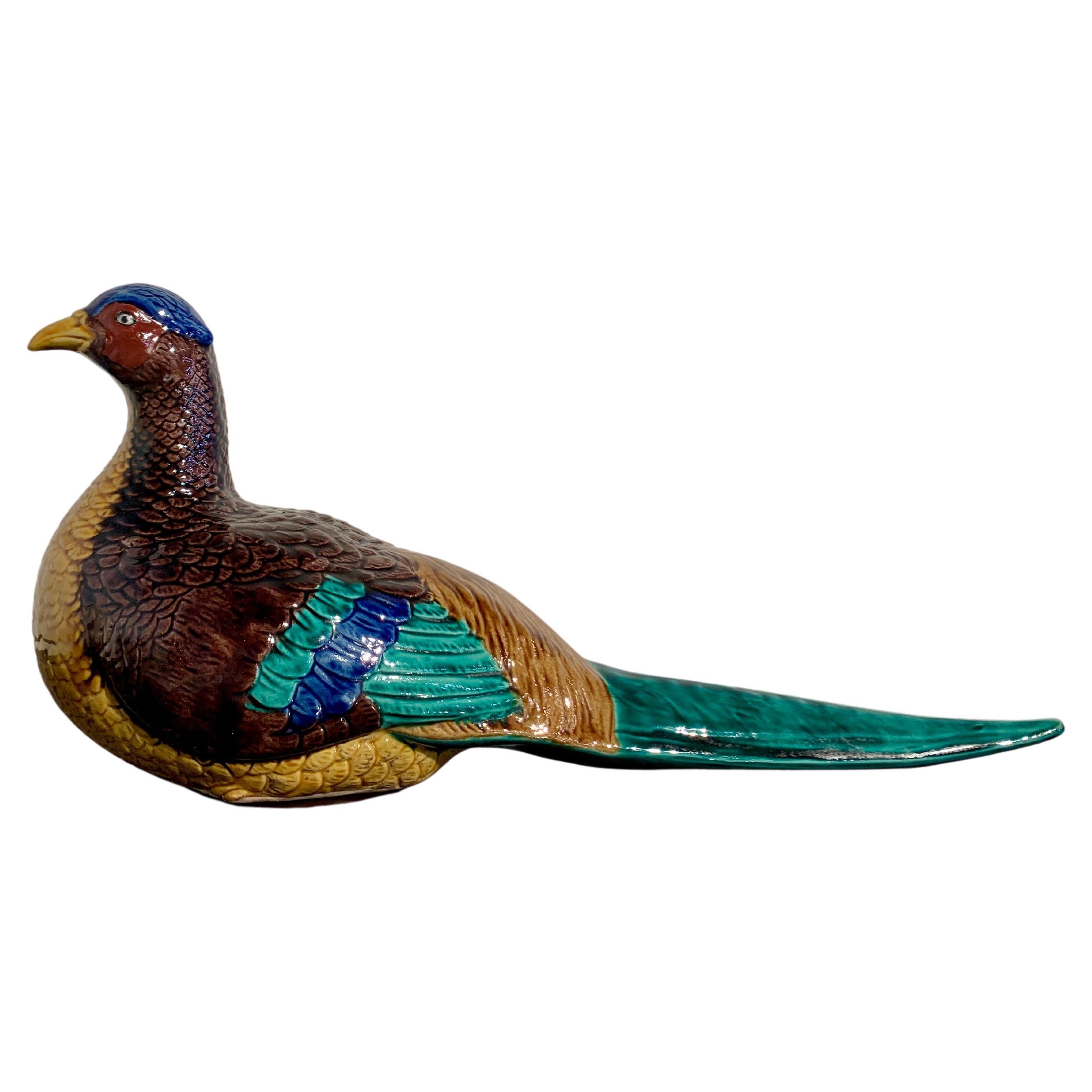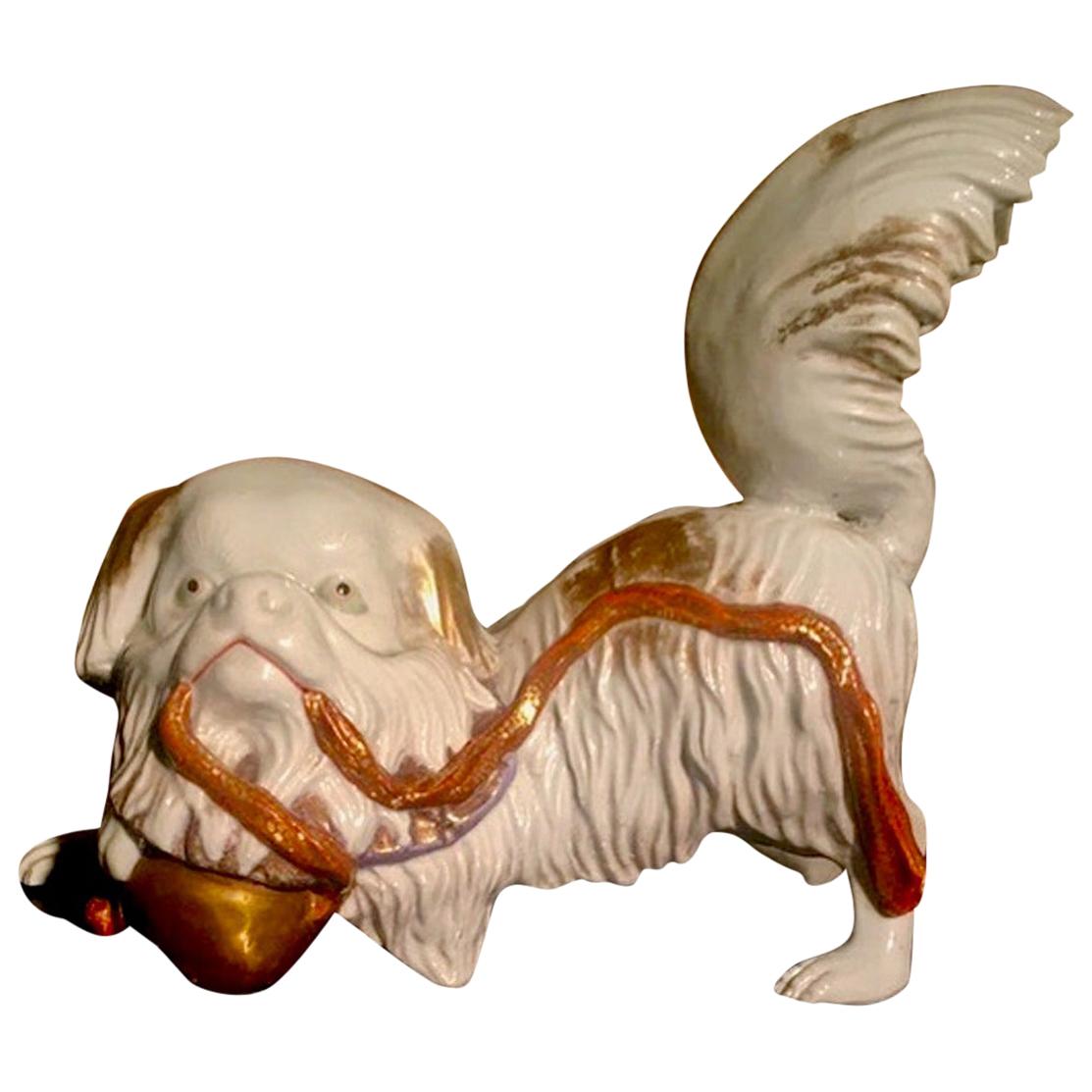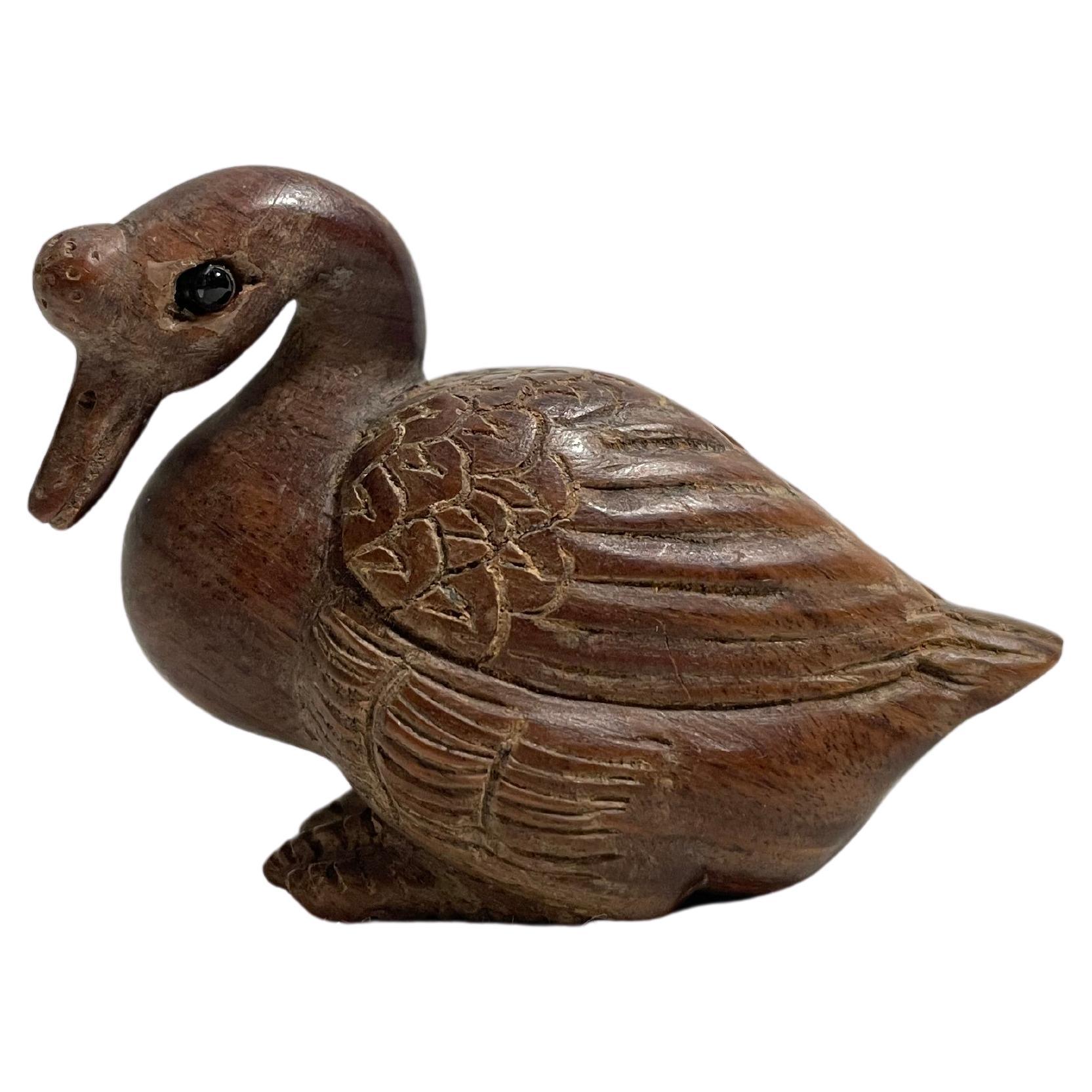Items Similar to Japanese Aote Kutani Phoenix Censer, Koro, Showa Era, Japan
Want more images or videos?
Request additional images or videos from the seller
1 of 15
Japanese Aote Kutani Phoenix Censer, Koro, Showa Era, Japan
About the Item
A fantastic Japanese Aote type Kutani incense burner, koro, in the form a phoenix, Showa era, circa 1930's, Japan.
The censer, koro, gracefully modeled as a phoenix in flight, and glazed in bold and bright green, yellow, aubergine and blue colors, in what is known as the Aote style.
The phoenix portrayed with her wings dramatically outstretched, long, elegant neck stretched upwards, her head turned, beak slightly open, with an intense gaze. The long tail curled over itself in a graceful fashion, also serving as a handle.
The phoenix's back, pierced with two openings, serves as the cover of the censer, and is surmounted by a yellow glazed cloud-form finial.
The koro magnificently glazed in near majolica colors. The body and underside of the wings glazed a yellow, the wings, neck and head in aubergine, the tail, back, and front of the wings glazed green. Blue glaze outlines the wings and back, and is used for the comb and wattle.
The bottom unglazed, with an impressed "Kutani" mark.
- Dimensions:Height: 4.25 in (10.8 cm)Width: 5.25 in (13.34 cm)Depth: 5 in (12.7 cm)
- Style:Showa (Of the Period)
- Materials and Techniques:Porcelain,Glazed
- Place of Origin:
- Period:
- Date of Manufacture:circa 1930s
- Condition:Wear consistent with age and use. No chips, cracks, or repairs noted.
- Seller Location:Austin, TX
- Reference Number:1stDibs: LU894727727012
About the Seller
5.0
Gold Seller
These expertly vetted sellers are highly rated and consistently exceed customer expectations.
Established in 2001
1stDibs seller since 2010
305 sales on 1stDibs
Typical response time: 1 hour
- ShippingRetrieving quote...Ships From: Austin, TX
- Return PolicyA return for this item may be initiated within 7 days of delivery.
More From This SellerView All
- Japanese Kutani Pheasant Sculpture, Okimono, Showa Era, Early 20th CenturyLocated in Austin, TXA spectacularly glazed Japanese Kutani model, okimono, of a pheasant, Showa era, early 20th century, Japan. The okimono, or decorative sculpture, in the form of a magnificent phea...Category
Vintage 1930s Japanese Showa Ceramics
MaterialsPorcelain
- Japanese Kutani Porcelain Figure of a Geisha or Bijin, Showa Era, 1930's, JapanLocated in Austin, TXA lovely Kutani porcelain model of a beautiful woman, bijin, or perhaps a geisha, Showa era, circa 1930's, Japan. A charming and delightful Japanese Kutani enameled porcelain figure of a bijin or geisha, early Showa Era, circa 1930's, Japan. The elegant figure of a beautiful woman, called a bijin, or perhaps a geisha, is portrayed dressed in full kimono and holding a closed folding fan in one hand. Her kimono of a rich and deep blue hue, with images of plump pomegranates in gilt. Her wide obi of a striking red color, and patterned with branches of pink blossoms. One foot, clad in a white tabi...Category
Vintage 1930s Japanese Showa Sculptures and Carvings
MaterialsPorcelain
- Japanese Kutani Porcelain Figure of a Bijin or Geisha, Showa Era, 1930's, JapanLocated in Austin, TXA charming and delightful Japanese Kutani enameled porcelain figure of a bijin or geisha, early Showa Era, circa 1930's, Japan. The elegant figure of a beautiful woman, called a bijin, portrayed dressed in full kimono and holding a fan in one hand. Her kimono of deep black with scattered cherry blossoms in white and outlined in gilding. Her wide obi of coral color, and patterned with stylized clouds of turquoise green and puce. One foot, clad in a white tabi...Category
Vintage 1930s Japanese Showa Sculptures and Carvings
MaterialsPorcelain
- Japanese Kutani Porcelain Beauty, Bijin, or Geisha, Showa Era, 1930's, JapanLocated in Austin, TXA delightful Japanese Kutani enameled porcelain figure of a bijin or geisha, early Showa Era, circa 1930's, Japan. The elegant figure of a beautiful woman, called a bijin, or perhap...Category
Vintage 1930s Sculptures and Carvings
MaterialsPorcelain
- Pair Japanese Kutani Okimono of Mandarin Ducks, Showa Era, Early 20th CenturyLocated in Austin, TXA charming and delightful pair of Kutani glazed porcelain models, okimono, of Mandarin ducks, oshidori, Showa Era, circa 1930's, Japan. The two Mandarin ducks, called oshidori in ...Category
Vintage 1930s Japanese Showa Ceramics
MaterialsPorcelain
- Japanese Kutani Vase with Landscape, Showa Period, 1930's, JapanLocated in Austin, TXA refined and well painted Kutani porcelain vase with a mountainous landscape scene, Showa Era, circa 1930, Japan. The elegant ovoid vase of fine, translucent porcelain...Category
Vintage 1930s Japanese Showa Ceramics
MaterialsPorcelain
You May Also Like
- Japanese Meiji Era Goldstone Enamel Censer KoroLocated in New York, NYAn antique Japanese Meiji Era tripod enamel metal censer koro. Circa: late 19th century. The sphere form ware is enameled with polychrome medallions with blossoming flowers and butte...Category
Antique Late 19th Century Japanese Meiji Jars
MaterialsEnamel
- Japanese Kutani Porcelain Pekinese Dog Playing with Shinto Shrine BellLocated in New York, NYJapanese Kutani porcelain sculpture of a Pekinese dog, playing with a Shinto shrine bell and wearing a gold ruffle collar. The very expressive figure features a luminous white ground with gold accents and a bright bell rope. A rare and fine masterpiece, frequently known as a symbol of royalty. The Japanese Chin...Category
Antique Late 19th Century Japanese Meiji Ceramics
MaterialsPorcelain
- Antique Japanese Wooden Netsuke ' Duck ' 1950s Showa EraLocated in Paris, FRThis is an antique netsuke made in Japan around Showa period 1950s. This netsuke was made by a netsuke artist. (you can find his signature on the bottom of this netsuke). Netsuke i...Category
Vintage 1950s Japanese Showa Animal Sculptures
MaterialsWood
- Japanese Vintage Bronze Crab 1930s 'Annosuke' Showa eraLocated in Paris, FRObject of crab with bronze: A very precious object made before the second world war, when bronze was rare to find. -Details- Era: Showa (around 1930-1939) Materials: Bronze Signatur...Category
Mid-20th Century Japanese Showa Animal Sculptures
MaterialsBronze
- Antique Japanese Meiji Era Porcelain Satsuma Figural Kutani Vase Fu Dogs GeishaLocated in Dayton, OH"Late Meiji era Kutani vase, circa 1903. A beautiful porcelain blue ground centered by an intricate Geisha flanked by gold figural Foo Dog handles. Features a floral and foliat motif throughout. Signed along the base. Kutani ware, Japanese porcelain made in Kaga province (now in Ishikawa prefecture). The name “Old Kutani” refers to porcelain decorated with heavily applied overglaze enamels and produced in the Kaga mountain village of Kutani. The powerful Maeda family had established a kiln there by 1656. The clay bodies used were gray and coarse-grained. On most pieces—dishes and bowls were especially common—a white or blue-white matte glaze was decorated in dark, restrained colours, initially greens, yellows, and some reds, and later purples and dark blues. Some items had cobalt blue decoration under a white glaze. The most noted Old Kutani pieces are “Green Kutani,” in which most of the surface is covered in a green or blue-green glaze to which one or two colours have been added (or the glaze is applied evenly over a design executed in black). The bold designs of Kutani ware drew freely from Chinese ceramics, paintings, and textiles. They are renowned for their rich pictorial ornament executed in lively, intense lines. Owing to local financial problems and difficulties in obtaining the necessary pigments, the Kutani kiln was abandoned some time in the Genroku period (1688–1704). Ceramics production in Kaga enjoyed a renaissance early in the 19th century, however, including the establishment of another kiln at Kutani in the 1820s. In addition to a revival of the styles of Old Kutani ware, there arose a style using gold on a coral-red ground, which was perfected during another spate of activity that began in the 1860s. Technical advances were made and Western-style pigments were adopted, and by the 1890s modern Kutani...Category
Antique Early 1900s Meiji Vases
MaterialsPorcelain
- Pair of Mid-Century Chinese Ceramic Polychrome Incense Censer Foo DogsLocated in San Diego, CAFantastic pair of mid-century Chinese ceramic polychrome incense censer foo dogs, circa 1970s. Great detail and a beautiful color combination of yellow, green and brown; the pair mea...Category
Mid-20th Century Chinese Mid-Century Modern Animal Sculptures
MaterialsCeramic





